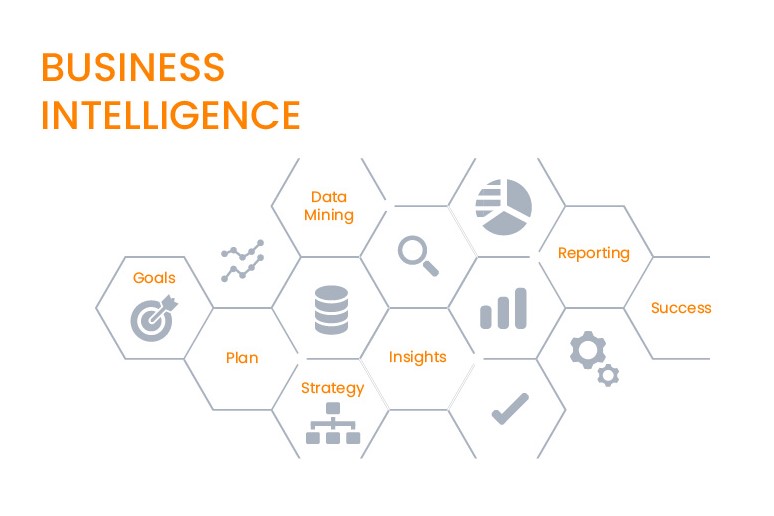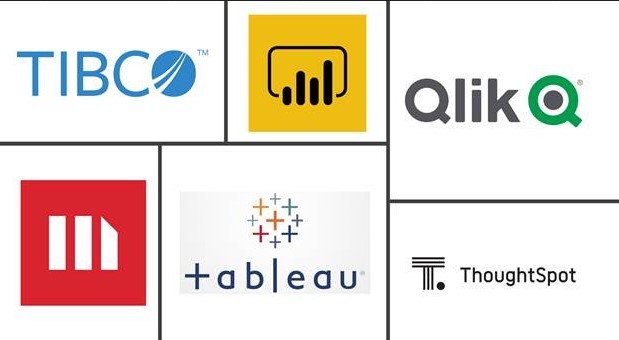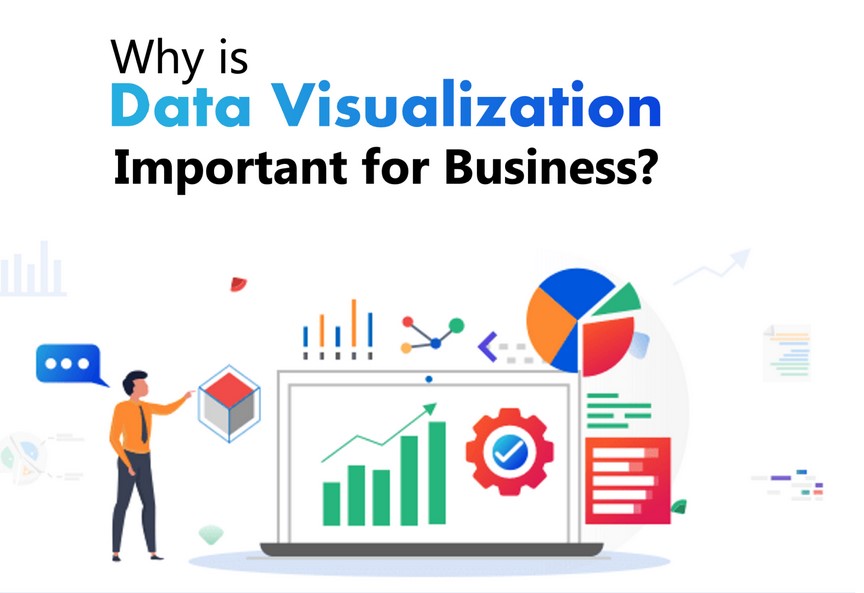In a world where data is hailed as the new oil, businesses are constantly on the hunt for innovative tools and strategies that can help them mine, understand, and effectively utilize this valuable resource. The realm of business intelligence software has quickly emerged as a game changer in this space, offering advanced capabilities for automated data visualization. However, with countless BI platforms vying for attention within a saturated market, how does one pick the best? This article is your road map to navigating through this digital landscape.
Imagine being able to transform complex data sets into compelling visual stories that have the power to shape business strategies and decisions! That’s exactly what top-notch business intelligence software can do for you. From identifying trends to simplifying complicated statistics into digestible insights – these tools are transforming how businesses navigate their future in real-time. Buckle up as we delve into exploring some of the best business intelligence software equipped with cutting-edge automated data visualization features.
In an era where data drives decision-making, the quest for the most effective business intelligence software is more pertinent than ever. Every day, businesses worldwide generate overwhelming amounts of data that could easily drown them if not properly managed and visualized. Automating this process has become a critical aspect of modern business strategy.
Welcome to our comprehensive guide titled ‘Best Business Intelligence Software for Automated Data Visualization’. This article serves as your compass in navigating through the vast ocean of available software solutions on the market. Whether you’re a small startup seeking to optimize operations or a multinational corporation wanting to leverage your colossal datasets, we’ve got you covered!
Understanding Business Intelligence Software for Automated Data Visualization
Business Intelligence (BI) software is a technology-driven process that transforms raw data into meaningful information to help businesses make strategic decisions. One of the key features of BI software is automated data visualization, which allows users to create interactive dashboards and reports, providing an easy way to understand complex data sets.
Automated data visualization in BI tools helps in representing large amounts of data through graphs, charts, maps and other visual elements. This not only simplifies the interpretation of data but also highlights trends, patterns or outliers which might go unnoticed in traditional spreadsheets. The automation aspect ensures that these visualizations are updated in real-time as new data comes in, thereby saving time and reducing manual effort.
In essence, understanding Business Intelligence software for automated data visualization involves appreciating its ability to convert vast volumes of raw data into visually appealing and easily comprehensible formats. This facilitates quicker decision-making processes and provides businesses with insights that can drive growth and efficiency.
Business Intelligence Software: Importance of Automated Data Visualization
Automated data visualization is an essential aspect of business intelligence software due to its ability to transform raw, complex data into a more understandable and visually appealing format. It enables businesses to quickly identify trends, patterns, and outliers in large data sets. This immediate access to visualized data can significantly speed up the decision-making process, allowing businesses to respond swiftly to market changes.
Moreover, automated data visualization tools can save businesses considerable time and resources. They eliminate the need for manual data analysis and graph creation which could be prone to errors and inconsistencies. Also, these tools often come with interactive features that allow users to manipulate variables or drill down into specific subsets of data. This level of interaction provides a deeper understanding of the information at hand, leading to more informed strategic decisions.
Business Intelligence Software: Key Features of Business Intelligence Software
Business Intelligence Software, often referred to as BI software, has several key features that make it an essential tool for businesses. The first is data visualization which allows users to understand complex data through interactive dashboards and reports. This feature simplifies data interpretation, making it easier for decision-makers to derive insights and make informed decisions quickly.
Another key feature of BI software is predictive analytics. This feature uses historical data to predict future trends, enabling businesses to anticipate market changes and adjust their strategies accordingly. Additionally, BI software also offers real-time analytics which provides instant access to data as it becomes available, allowing businesses to react more swiftly to business developments.
Lastly, a significant feature of Business Intelligence Software is its capability for data integration from various sources. It can gather information from different databases, spreadsheets, and even cloud-based applications into a single platform for easy analysis. This eliminates the need for manual data collection and ensures that all relevant information is readily available when needed.
Top-Rated Business Intelligence Software Tools
Some of the top-rated Business Intelligence (BI) software tools include Tableau, Microsoft Power BI, and QlikView.
Tableau is highly rated due to its user-friendly interface and powerful data visualization capabilities. It allows users to create interactive dashboards that can be easily understood by non-technical stakeholders. Microsoft Power BI is another popular choice because it integrates seamlessly with other Microsoft products such as Excel and Azure. It offers robust reporting features and advanced analytics capabilities.
QlikView, on the other hand, stands out for its associative model which allows users to explore all possible associations in their data, not just pre-defined hierarchies or drill paths. This makes QlikView particularly powerful for ad-hoc querying and exploration. These three tools are widely used across various industries due to their versatility, scalability, and comprehensive feature sets.
Business Intelligence Software: Detailed Analysis of Each BI Software
Answering this question in a few paragraphs is quite challenging due to the vast number of Business Intelligence (BI) software available in the market. However, I can provide a general overview.
Power BI, developed by Microsoft, is known for its user-friendly interface and robust data visualization capabilities. It allows users to create reports with drag-and-drop functionalities and supports a wide range of data sources. Tableau is another powerful tool that excels in data visualization and exploration. It offers both desktop and cloud versions and is praised for its ability to handle large datasets.
SAP Business Objects, on the other hand, provides comprehensive solutions for reporting, analysis, and data visualization. It’s highly customizable but might require more technical expertise to use effectively. Oracle BI also offers extensive features including ad-hoc analysis, predictive analytics, mobile integration and more. However, it’s often considered less user-friendly than other tools like Power BI or Tableau. Remember that the best BI tool depends on your specific business needs and resources.
Case Studies: Success Stories with BI Software for automated data visualization
Business Intelligence (BI) software has been a game changer for many organizations in terms of data visualization. One such success story is that of American Express. They have leveraged BI tools to analyze and interpret vast amounts of customer data, enabling them to provide more personalized services. The insights gained from the BI software allowed American Express to predict consumer behavior and thereby increase customer engagement.
Another success story is that of Netflix. Netflix uses BI software for automated data visualization which allows them to understand viewing habits, ratings, and feedback from their millions of subscribers worldwide. This data-driven approach has helped Netflix make informed decisions about which shows to produce or purchase rights for, leading to highly successful series like Stranger Things and The Crown. Thus, BI software has significantly contributed towards decision making and strategy planning in these organizations.
Importance of Automated Data Visualization in Business
Automated data visualization plays a crucial role in businesses by making complex data more understandable, accessible, and usable. It transforms raw data into a visual context such as charts, graphs, and maps to make it easier for the human brain to understand and pull insights from large amounts of data. This aids in identifying patterns, trends, and correlations that might go unnoticed in traditional text-based data.
Furthermore, automated data visualization saves time and increases efficiency. Instead of manually creating charts or reports which can be time-consuming and prone to errors, automation tools can generate visualizations quickly and accurately. This allows decision-makers to focus more on analyzing the information for strategic planning rather than spending time on its preparation. Ultimately, this leads to faster decisions, better business strategies, and improved operational efficiency.
Top 5 Business Intelligence Software for Visualization
1. Tableau: This is a leading data visualization tool that allows users to create interactive dashboards and reports. It also supports a wide range of data sources, making it highly versatile for businesses of all sizes.
2. Microsoft Power BI: This software offers robust visualization capabilities, allowing users to create interactive reports and dashboards with drag-and-drop functionality. Power BI also integrates well with other Microsoft products, providing seamless data analysis experiences.
3. QlikView: Known for its associative data indexing engine, QlikView enables users to create sophisticated visualizations and perform in-depth analyses. Its intuitive interface makes it easy even for non-technical users to navigate and extract insights from complex datasets.
4. Domo: Domo is a cloud-based platform that provides real-time data visualization and helps organizations make informed decisions quickly. It offers various customization options, allowing you to tailor your visualizations according to your business needs.
5. Looker: Looker is another popular choice for data visualization, offering a web-based interface that allows users to explore and share real-time business analytics easily. It’s known for its strong collaboration features, making it ideal for teams that need shared access to data insights.
Detailed Overview of Each Recommended Software
There are several recommended software tools for data visualization, and each one has its unique features.
Tableau is one of the most popular ones that provides an intuitive interface and a wide range of options for visualizing data. It allows users to create dashboards, charts, maps, etc., with just a few clicks. Tableau also supports a large number of data sources including Excel, SQL databases, cloud services like Google Analytics and Salesforce.
Another notable tool is PowerBI by Microsoft. It’s particularly useful for businesses that already use other Microsoft products as it integrates well with them. PowerBI offers robust reporting features and allows users to create interactive visualizations and reports. It also supports a wide variety of data sources.
D3.js is another powerful tool for creating complex and highly customizable visualizations. However, it requires good knowledge of JavaScript to use effectively which could be a barrier for non-programmers.
Each tool has its strengths and weaknesses so the best one really depends on your specific needs and skills.
Key Features to Look for in BI Software
One of the key features to look for in Business Intelligence (BI) software for data visualization is the ability to create interactive dashboards. This feature allows you to manipulate and interact with your data in real-time, enabling you to discover insights quickly and easily. The software should also support a wide range of chart types, such as bar graphs, pie charts, line graphs, scatter plots, etc., so that you can present your data in the most effective way possible.
Another crucial feature is data integration capabilities. Your BI tool should be able to seamlessly integrate with various data sources like databases, spreadsheets, cloud services and even social media platforms. This will allow you to pull all your relevant data into one place for comprehensive analysis. Lastly, consider the ease of use of the software. A user-friendly interface with intuitive navigation and design can significantly reduce the learning curve and increase efficiency.
How to Choose the Right BI Software
Choosing the right Business Intelligence (BI) software for data visualization depends on your specific needs and objectives. First, you should identify your business requirements and goals. This could be anything from tracking KPIs, analyzing customer behavior, or predicting future trends. The BI tool you choose should have features that cater to these needs.
Secondly, consider the ease of use. A user-friendly interface is crucial as it will determine how quickly your team can adapt to the software. Also, check if the software allows for easy integration with your existing systems and data sources. Finally, take into account the cost of the software including licensing fees, implementation costs and any potential training required for your staff.
Lastly, look at customer reviews and feedback about the BI tool’s performance and reliability. This will give you an idea of its strengths and weaknesses from people who have used it before. You may also want to consider getting a demo or trial version before making a final decision.
Case Studies: Success Stories Using BI Software
Business Intelligence (BI) software has been instrumental in transforming raw data into meaningful insights for many businesses. One such success story is that of Airbnb, the popular online marketplace for hospitality services. They leveraged BI software to create dynamic dashboards and visualizations which helped them understand user behavior, booking patterns and market trends. This data-driven approach significantly improved their decision-making process, enabling them to optimize their pricing strategies and enhance customer experiences.
Another example is Spotify, the renowned music streaming service. They utilized BI tools to analyze vast amounts of data related to user listening habits, song popularity, and playlist trends. Through visually appealing and easily understandable charts and graphs, they were able to identify patterns and gain deep insights into user preferences. This allowed them to tailor their music recommendations more accurately, thereby improving user engagement and satisfaction. These are just a couple of examples of how BI software can effectively be used for data visualization to drive business growth and success.
Conclusion
In conclusion, leveraging the power of business intelligence software for automated data visualization is indispensable in today’s data-centric world. The right tool can unveil hidden insights, drive informed decision making and fuel success by adding value to your raw data. Imagine possessing the ability to instantaneously transform complex, cryptic data into comprehensive, easy-to-read visualizations that spotlight critical trends and anomalies at a glance.
Consider the exponential growth potential when every crucial business decision is backed by meticulously crafted visuals drawn from factual data rather than relying on intuition or judgment. Using top-notch BI tools isn’t just an upgrade; it’s about stepping ahead with confidence in a competitive environment where being quick isn’t enough – you need to be accurate as well. Indeed, harnessing advanced software for automated data visualization signifies embracing a culture of analytical excellence in your organization – investing not just in technology but also facilitating smarter business landscapes.



